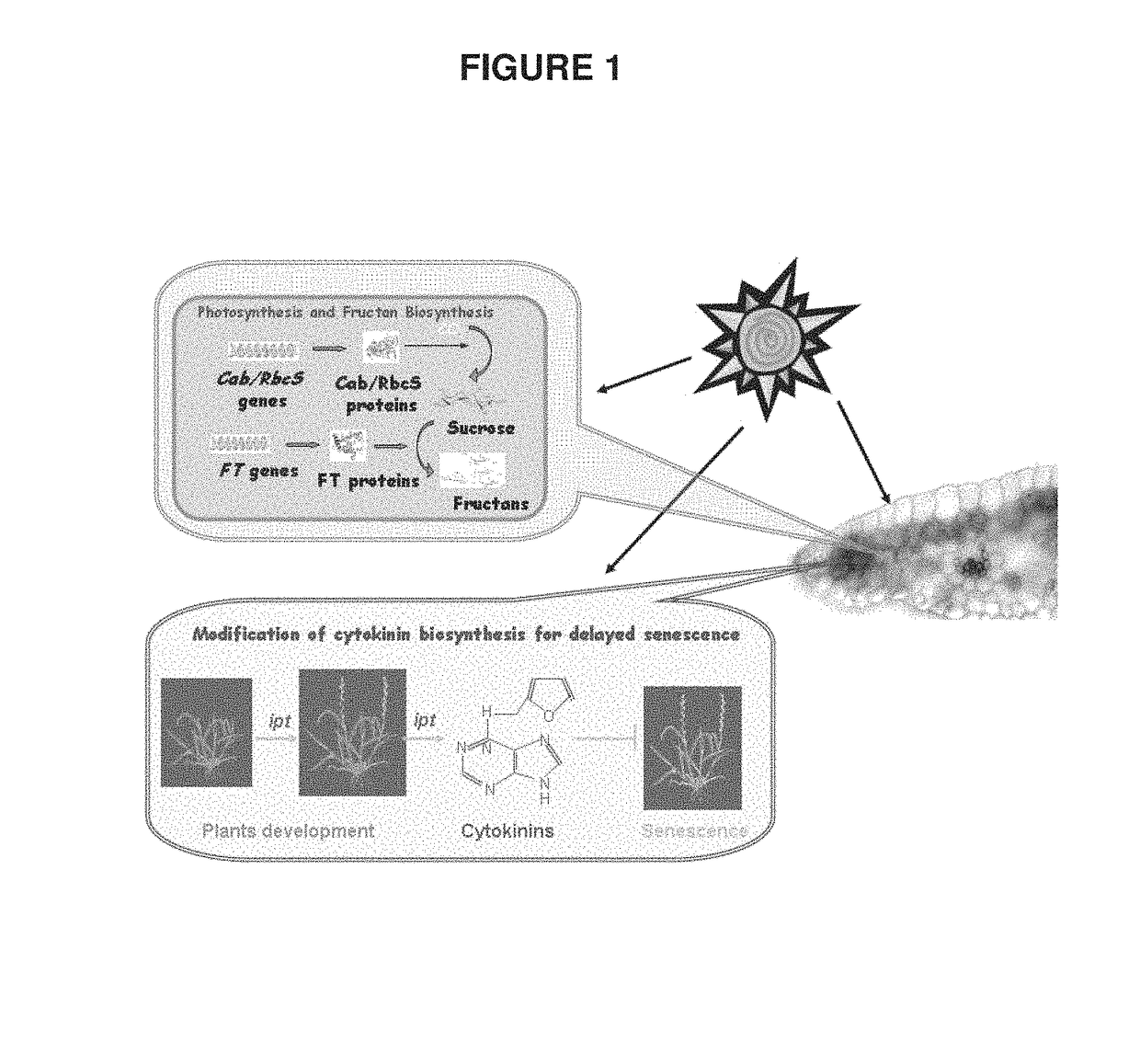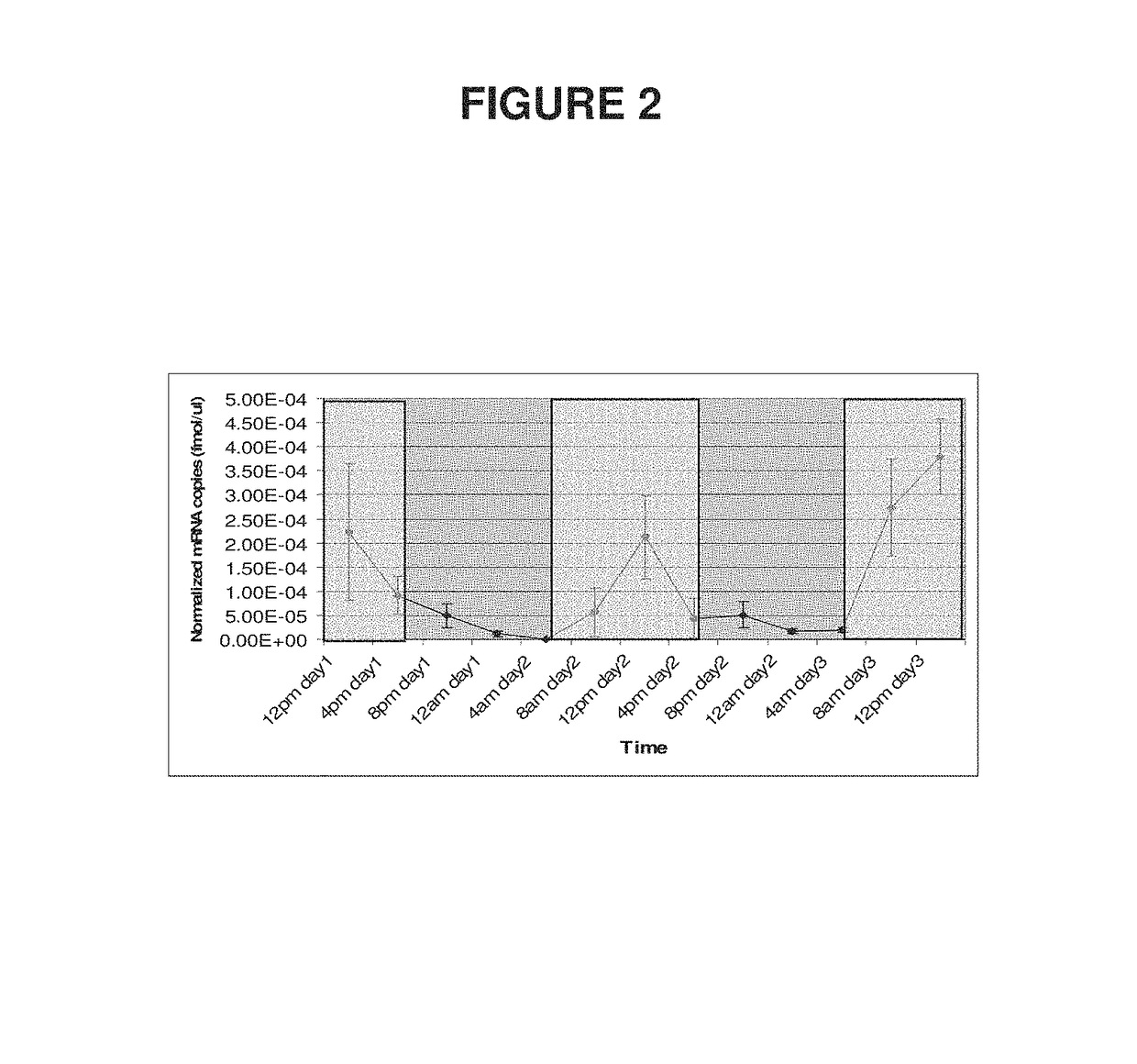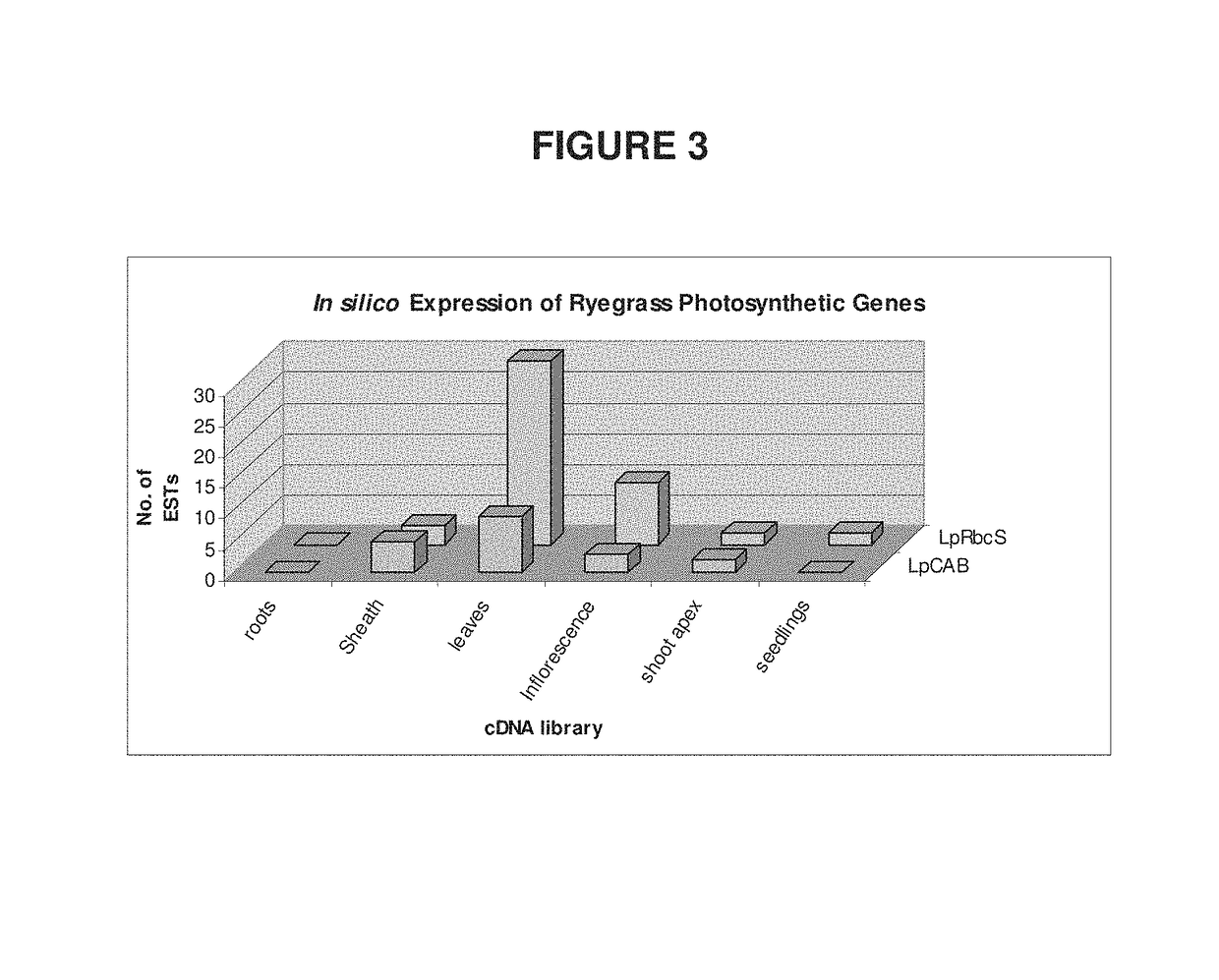Modification of fructan biosynthesis, increasing plant biomass, and enhancing productivity of biochemical pathways in a plant
a biosynthesis and fructan technology, applied in biochemistry apparatus and processes, enzymology, transferases, etc., can solve the problems of consuming a large amount of readily available energy in the fermentation process of the rumen, and achieve the effects of increasing plant biomass, nutritional enhancement, and increasing plant biomass
- Summary
- Abstract
- Description
- Claims
- Application Information
AI Technical Summary
Benefits of technology
Problems solved by technology
Method used
Image
Examples
example 1
Isolation of Photosynthetic Promoters
Cloning of a Photosynthetic Promoter from Bread Wheat
[0262]The Ribulose-1,5-bisphosphate carboxylase / oxygenase Small subunit (RbcS) is a well-characterised light-regulated gene in higher plants. The bread wheat (Triticum aestivum), TaRbcS regulatory sequences (promoter and terminator) have previously been cloned (Zeng, et al., 1995; Sasanuma, 2001). A 695 bp promoter fragment from sequence previously published containing the TATA signal from the TaRbcS gene (NCBI accession number AB042069) was PCR-amplified.
Cloning of a Photosynthetic Promoter from Arabidopsis
[0263]A 1700 bp fragment of the Arabidopsis thaliana Ribulose-1,5-bisphosphate carboxylase / oxygenase Small subunit (AtRbcS) promoter sequence has previously been cloned. Primers will be designed to amplify a smaller fragment containing the TATA signal from the AtRbcS promoter for use in expression vectors.
Discovery and Cloning of Photosynthetic Promoters from Perennial Ryegrass
[0264]The exp...
example 2
Isolation of Fructan Biosynthesis Genes
Isolation of Fructan Biosynthesis Genes from Lolium perenne
[0269]The Lolium perenne cDNA clones encoding sequences for Lp1-SST and Lp6G-FFT have previously been isolated from a perennial ryegrass cDNA library (Chalmers, et al., 2003; Chalmers, et al., 2005). The complete gene sequences of the isolated perennial ryegrass fructosyltransferase homologues are available, and nucleotide and protein sequences for Lp1-SST are disclosed in International patent application PCT AU01 / 00705 (SEQ ID NOS 11 and 12).
[0270]Partial sequence for Lp6G-FFT is disclosed in International patent PCT / AU / 01 / 01275 SEQ IDs 109 and 110, for nucleotide and amino acid sequences respectively. The full-length clone was PCR amplified from a cDNA, cloned and sequenced (FIG. 7). When the Lp6G-FFT ORF was compared with the published Lp6G-FFT from L. perenne 23 nucleotide changes were noted. Comparison of the predicted protein sequences revealed only two changes between the two am...
example 3
Creation of Translational FT Fusion Proteins
Cloning of FT Translational FT Fusion
[0273]A genetic FT fusion was created between the open reading frames for Lp1-SST and Lp6G-FFT, following the procedure depicted in FIG. 11. The Lp1-SST gene was PCR-amplified with a GATEWAY recombination site incorporated in the forward primer. A sequence that codes for three glycine residues followed by a Hind III site was incorporated into the reverse primer, with the stop codon removed. The Lp6G-FFT gene was PCR-amplified with a Hind III site followed by sequence that codes for three glycine residues and the gene specific sequence without the ATG. The reverse primer for the Lp6G-FFT gene was flanked by a second GATEWAY recombination site. The primer sequences are provided in Table 2. The purified fragments were digested with Hind III and the ligated product was cloned into the Invitrogen GATEWAY pDONR221 Entry vector. When the resultant pENTRY1-Lp1-SST-Lp6G-FFT-2 entry clones were sequenced, one seq...
PUM
| Property | Measurement | Unit |
|---|---|---|
| width | aaaaa | aaaaa |
| height | aaaaa | aaaaa |
| width | aaaaa | aaaaa |
Abstract
Description
Claims
Application Information
 Login to View More
Login to View More - R&D
- Intellectual Property
- Life Sciences
- Materials
- Tech Scout
- Unparalleled Data Quality
- Higher Quality Content
- 60% Fewer Hallucinations
Browse by: Latest US Patents, China's latest patents, Technical Efficacy Thesaurus, Application Domain, Technology Topic, Popular Technical Reports.
© 2025 PatSnap. All rights reserved.Legal|Privacy policy|Modern Slavery Act Transparency Statement|Sitemap|About US| Contact US: help@patsnap.com



